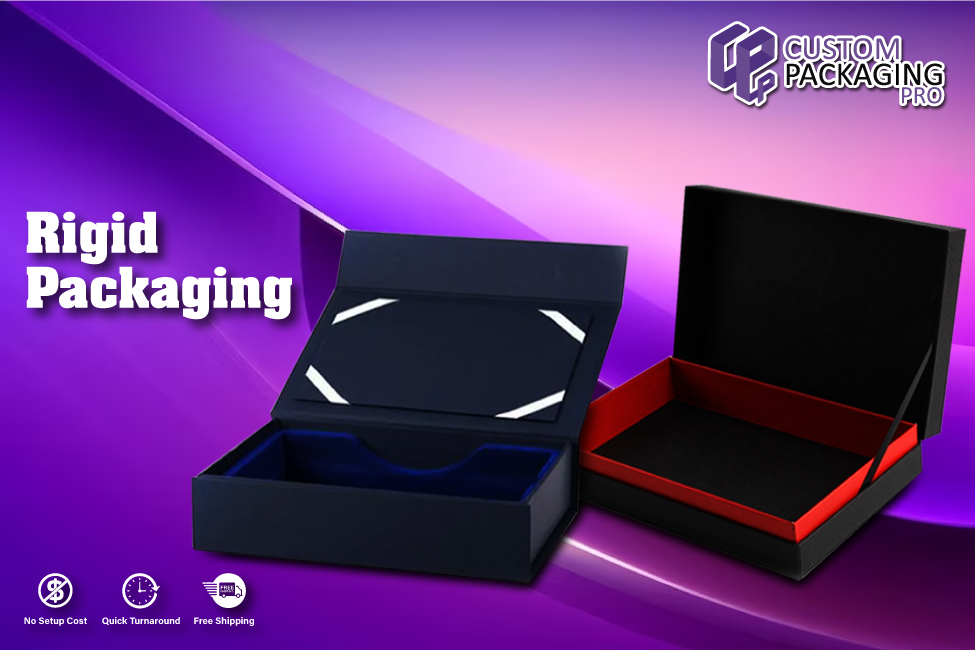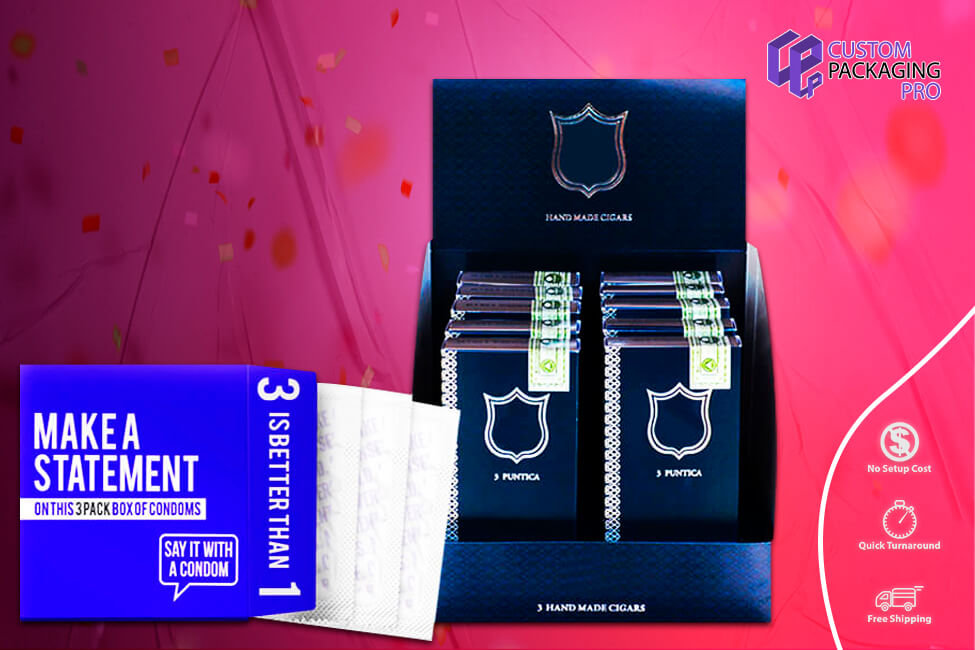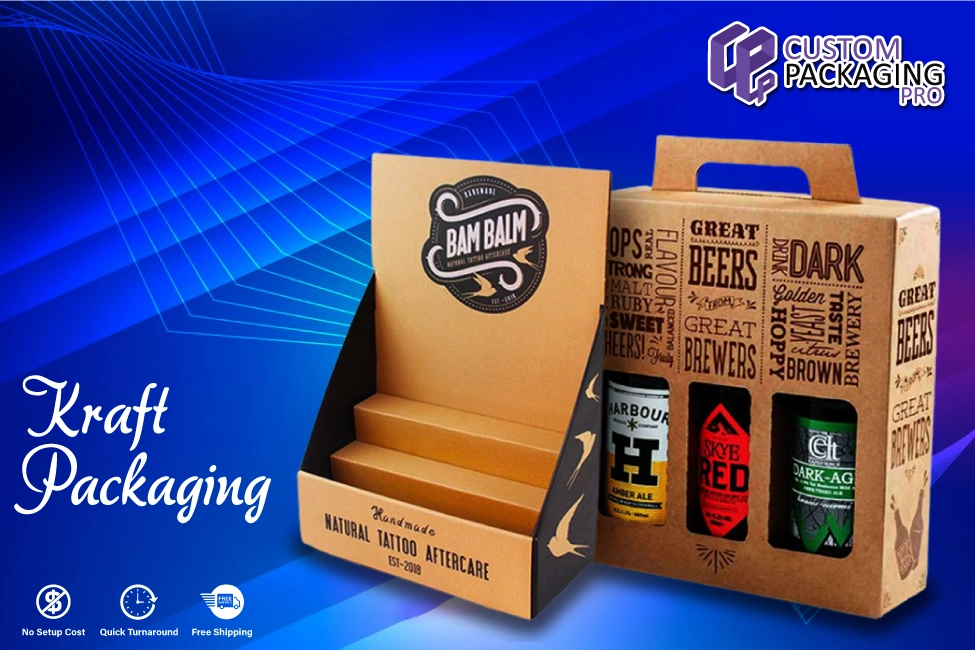March 28, 2024
How to Build Value with Kraft Packaging?
Packaging has become a standard option for many different businesses. It is impossible to sell or distribute your products safely without proper boxes. These must be sturdy and, at the same time, safe for the environment around us. Well known for its eco-friendly nature, Kraft is frequently distinguished by its robust texture and natural brown color. Kraft Packaging provides a flexible and environmentally friendly solution that fits modern customer tastes and sustainability efforts for anything from food to cosmetics, retail to shipping.
What Makes Kraft Packaging a Substitute to Conventional Solutions?
As consumers emphasize using green options for packaging, businesses consider sustainability a competitive substitute for conventional materials like plastic. As a result, manufacturers use stock materials that would not impose any risk to the environment. At the same time, these must possess exceptional strength and resistance to tearing. That is where Kraft enters the scene. Eco-friendly and robust, it is thus the perfect material for packaging applications where durability is crucial. Kraft Packaging and its environmental friendliness are among its most significant benefits. It is recyclable and biodegradable, unlike plastic, which can take decades to break down and frequently damage the environment. This feature not only lessens the environmental footprint but also appeals to buyers concerned about the environment and looking for products that have little effect on the environment. It fits in nicely with what the consumers find aesthetically pleasing.
Suitable for a Vast Range of Products
This aesthetic aspect might improve its overall presentation, whether a product is handmade crafts, organic beauty, or artisanal food items. Thanks to their strength and resistance to tearing, products are kept well-protected throughout storage and transportation, lowering the possibility of damage and soiling. This is especially important for products that need special handling, such as glass bottles, perishables, and delicate goods. All that depends upon how your manufacturer treats the order and creates a box according to the safety needs of your products. Add inserts and partitions to ensure your items remain safe during transit and storage. You can also opt for a variety of thicknesses of Kraft Board.

Rigid Packaging Builds Connection to Manage Perfect Sales
Since Packaging is the initial point of contact between a product and a potential customer, it is essential to the consumer experience. Packaging communicates brand identity, values, and product information and is a valuable tool for containment and product protection. With so many products vying for attention in the cutthroat retail environment, well-designed Rigid Packaging can remain the difference between a sale and being passed over. Attracting attention is one of its primary purposes. In a sea of goods arranged on shelves and online marketplaces, visually striking Packaging can grab attention and pique their curiosity. Innovative forms, eye-catching graphics, and vibrant colors can help a product stand out.
Rigid Packaging Stays Considerate with Customizable Designs
Packaging quietly and effectively communicates information about the product's features, qualities, and unique selling aspects. Creatively using text and images may convey in a moment what makes a product unique and why it is worth buying. Furthermore, packaging can influence how much consumers think it is worth. Considerate design, premium materials, and close attention to detail can all help a product seem worth the money. Most of the credit goes to its versatility in form and functions, as we can modify it according to the needs and requirements of any product you want to put in it.
Build New Design Patterns with Rigid Packaging
Sustainability has emerged as a crucial factor in packaging design in recent years. Retailers come from pressure to minimize packaging waste and lessen their environmental footprint due to growing consumer demand for Eco-friendly items and environmental concerns. This has prompted developments in design techniques and Rigid Packaging materials to improve sustainability. Retailers are investigating several ways to make their Packaging more ecologically friendly without sacrificing utility and aesthetics, from biodegradable materials to minimalist packaging designs that require less material. Brand identity and storytelling are intimately related to packaging design as well. In addition, they communicate their personality, values, and positioning visually.

Build Creative Shield and Values in Wholesale Boxes
The boxes are essential to the global economy because they provide the foundation of supply chains in many different sectors of the economy. Wholesale Boxes are made to fit the other requirements of organizations across the globe. They are available in various sizes, shapes, and materials for shipping goods. It is more than just containers; they represent creativity, efficiency, and sustainability in contemporary trade. They are designed to hold various objects, from robust industrial equipment to delicate electronics. Boxes, whether made of solid plastic, corrugated cardboard, or environmentally friendly substitutes such as recycled paperboard. They are made to minimize their adverse environmental effects while offering sufficient protection during transportation.
Versatility with Perfect Material Selection
Businesses may match packaging solutions to consumer preferences and sustainability aims because of their material selection and versatility. Wholesale Boxes act as blank canvases for their branding, providing an excellent chance to leave a lasting impact on clients. Companies may successfully turn boxes into marketing assets by adding logos, slogans, and visuals through custom printing. In addition to improving the way products come from the present, branding encourages consumer loyalty and brand identification. Standing out in a crowded market with packaging might mean the difference between taking market share and building a devoted clientele. Customizable packaging options can also improve storage and logistics, which lowers costs and boosts supply chain effectiveness.
Manage Space and Resources with Wholesale
Boxes are not practical and aesthetically pleasing, but they help businesses save money and run more efficiently. Businesses that buy in large quantities can use economies of scale to bargain with suppliers for lower prices, which lowers the cost of Wholesale Boxes for each unit. Standardized box sizes simplify order fulfillment procedures, optimize warehouse space, and optimize inventory management and logistics. This effectiveness results in real-time and resource savings. Thus, companies can use it to fund other strategic projects and pass cost savings down to clients. They are essential for reasons beyond business and critical to the global effort to aid in disaster relief and humanitarian causes. It lowers the possibility of returns and guarantees customer satisfaction by offering protection against damage during shipping and handling.












